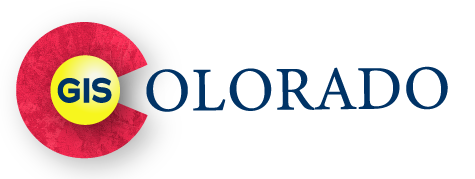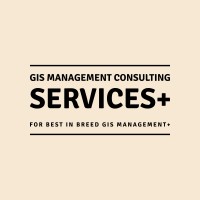Bylaws are used to guide GIS Colorado’s Board of Director’s actions and decisions. They are designed to clearly outline rules around authority levels, rights, and expectations of the Board and the Organization.
Summary of Changes
Board of Directors
Current: “The Board of Directors shall consist of nine (9) elected directors from which four (4) elected officers will be elected by the board. A simple majority of the board shall pass any motion. Each elected officer and director shall serve a three-year term of office. Composition of the Board shall represent, as fair as possible, all the geographic areas of the State of Colorado.”
Update: “The Board of Directors shall consist of nine (9) elected directors from which four (4) elected officers will be elected by the board. Directors are elected to serve a three-year term. A simple majority of the board shall pass any motion. All Board members must reside in the State of Colorado.”
Interpretation: This change removes the impossible requirement for the board to control the membership election so that all parts of Colorado are represented on the upcoming board. The intent of this goal has been moved to the Roles and Responsibilities document, where the board will attempt to be more geographically even-handed in meeting locations and to encourage nominations from around the State to run. The Board has no intention of controlling elections.
Responsibility of the Board of Directors:
Current: “No reference to the Roles and Responsibility document.”
Update: “Conform to the GIS Colorado Roles and Responsibilities document (as approved and update by Board)”
Interpretation: This change will require board members to comply with the Roles and Responsibilities document, an annually reviewed document that documents business practices of the organization.
Officers
Current: “The organization officers shall include a President (Chair), Vice-president (Co-Chair), Secretary, and Treasurer. The responsibility of each officer is identified below.
A. President (Chair): The President shall be a voting member of the organization elected by a majority vote of the membership. The President will preside at all meetings of the Board of Directors. He/she shall be subject to the control of the Board of Directors, have general supervision, direction, and control of day-to-day business and affairs of the organization. The President shall vote only to break ties of the Board of Directors. The President shall distribute the agenda of the Board of Directors meetings at least 2 days before the meeting.
B. Vice-President (Co-Chair): In the absence or disability of the President, the Vice-President shall perform all the duties of the President, and when so acting, shall have all the powers of and be subject to all the restrictions upon the President. The Vice-President shall have such other duties as may be from time to time prescribed by the President and the Board of Directors or by these Bylaws.
C. Secretary: The Secretary shall keep a book of minutes, which shall record the proceedings of all official meetings of members and all meetings of the Board of Directors with full details thereof. The Secretary shall distribute the minutes of board meetings to the Board of Directors within two weeks after the meeting has taken place. He/She shall work with the Board to develop the agenda of all official meetings. He/she shall also keep all administrative records associated with the organization, including both physical and virtual files.
D. Treasurer: The Treasurer shall receive and keep account of all funds and monies of the organization, including assets, liabilities, receipts, disbursements, gains, losses, and surpluses. He/she shall prepare an annual income and expense report for Board review by the first quarterly meeting.”
Update: “The organization officers shall include a President (Chair), Vice-president (Co-Chair), Secretary, and Treasurer. Officers will provide monthly reports as required. The responsibility of each officer is identified below.
A. President (Chair): The President will preside at all meetings of the Board of Directors (unless previously delegated to the Vice-President or designee). The President shall be subject to the control of the Board of Directors, have general supervision, direction, and control of day-to-day business and affairs of the organization. The President shall vote only to break ties of the Board of Directors. The President shall distribute the agenda of the Board of Directors meetings at least 2 days before the meeting.
B. Vice-President (Co-Chair): In the absence or disability of the President, the Vice President shall perform all the duties of the President, and when so acting, shall have all the powers of and be subject to all the restrictions upon the President.
C. Secretary: The Secretary shall keep the organization’s official records and follow processes on distribution of information as described in the Board Roles and Responsibilities Document. The Secretary shall also keep all administrative records associated with the organization, including both physical and virtual files.
D. Treasurer: The Treasurer shall receive and keep accounting of all funds and monies of the organization, including assets, liabilities, receipts, disbursements, gains, losses, and surpluses. The Treasurer shall prepare an annual treasurer’s report for Board review by the first quarterly meeting.”
Interpretation: This change removes many of the tactical actions required by officers from the bylaws and moves them into the Roles and Responsibilities document, where they are easier to adjust based on need by future boards without losing the officer definitions.
Advisory Council – NEW
“The Advisory Council supports the Board of Directors to ensure organizational continuity.
The Advisory Council shall be made up of 3 to 5 previously elected Board members that have completed at least two full terms and are appointed by the majority vote of the Board of Directors. Advisory Council Members carry most rights of the Board of Directors as defined by the Board Roles and Responsibilities Document. Council members do not have voting rights. The Advisory Council exists at the discretion of the Board of Directors and will be reviewed annually. Advisory Council Members will be expected to follow the Board Code of Conduct and Board Roles and Responsibilities Document or will conduct themselves based on guiding documents maintained by the board.”
Interpretation: The Board created the Advisory Council to help mitigate board member turnover and capture institutional knowledge for easier transitions between boards. This addition will formalize the relationship between the Board and the Advisory Council.
Committees
Updated definition of a standing committee:
- Standing Committee: A permanent committee appointed to deal with a specific long standing subject. All members of the committee must be voting members of GIS Colorado.
Interpretation: This change will require all standing committee members to have active membership accounts with GIS Colorado and be up-to-date with their membership dues. This requirement was not previously stated.
Quarterly Meetings
Current: “There shall be a total of four (4) meetings to be held in various locations throughout Colorado during the year from January to December, with any exceptions to be approved by the Board of Directors. The GIS Colorado Board of Directors will set up the locations and agendas for these meetings. All members will receive a meeting notification and proposed agenda.”
Update: “There shall be a minimum of four (4) Membership meetings to be held in various locations throughout Colorado during the year from January to December, with any exception to be approved by the Board of Directors. Membership meetings can be open to the public. Meetings can be in-person or virtual, at the discretion of the Board. The GIS Colorado Board of Directors will set up the locations and agendas for these meetings. All members will receive a meeting notification and proposed agenda.”
Interpretation: This change clarifies that membership meetings are public, and releases the board from keeping all membership meetings in person. This change will give the board more flexibility to address access concerns related to Colorado’s geographic and weather challenges during the year.
Emergency or Interim Board of Director Meetings – NEW
“Any Board of Director can request an emergency meeting of the Board to discuss a critical issue in order to make a prompt decision. A situation may demand fast action which cannot follow the regular meeting schedule. The request will be sent to the President or Vice President to officially call the meeting.”
Interpretation: This addition defines how the board can meet and make decisions in case of emergencies.
You can view GIS Colorado’s Bylaws and the Proposed Bylaws by clicking on the links below.
Article VII. Amendments to the Bylaws
Upon proposal to the Board of Directors, these Bylaws may be amended, repealed, or altered, in whole or in part, by a simple majority of votes cast by the voting membership, either in person or electronic. All voting members must be notified of the proposed amendment no less than 30 days before the vote is to be made on the amendment.
Voting is Closed








